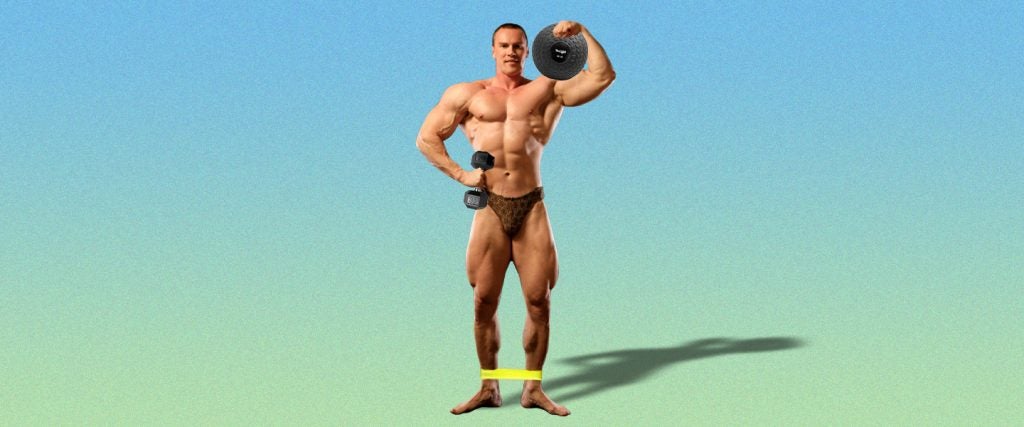When I was 16, I thought lifeguarding was one of the most noble jobs that a person could have. Even if I was responsible for overseeing a 50-meter pool from a lifeguard tower rather than patrolling the Pacific on an ATV, I thought I was basically saving the lives of pre-teen swimmers by preventing them from running on the pool deck and committing the unforgivable sin of splashing.
However, the most annoying facet of the job consisted of the inservices and drills, which would take up entire Saturday mornings, and result in horribly mismatched tan lines from all the time spent standing on the pool deck listening to the pontifications of the instructors. During one such inservice, one of my fellow lifeguards, Jason, spent an uncomfortable amount of time comparing his chest development to that of the other guys on the lifeguarding staff.
“Everybody’s chest is bigger than mine,” he lamented. “I bench more than all of y’all, too! It’s not fair!”
Back then, I wouldn’t have known how to tell Jason what his problem was. Now, it would be a simple matter of pointing out his inwardly slanted posture to him, which was probably preventing him from getting his shoulders back and opening up his chest while bench-pressing.
What does common bad posture look like?
More often than not, bad posture begins and ends with the orientation of the spine, and whatever underlying causes might contribute to it becoming bent out of shape.
Contrary to what many people might suspect, the natural formation of our spines doesn’t run perpendicular to the ground when we’re standing upright. The spine actually follows a very gentle S-shaped curve, which eases the absorption of whatever stress is placed upon it by gravity, because whatever pressure is applied by gravity is distributed throughout the spine’s curvature.
In any situation where the S-shaped alignment has been tampered with, greater stress will ultimately be placed on one or more segments of the spine than it/they can handle.
The classic form of bad posture in most people’s minds is commonly accrued as a result of sitting at a desk for prolonged periods. The rounding of the back causes it to arch and the neck and shoulders to shift noticeably forward, thereby turning that subtle S-shaped spinal curve into more of a question mark.
Work environments aside, there are also ways that workout activities can have a negative influence on your posture as well.
Really? Working out can harm my posture?
It certainly can. Postural misalignments caused by resistance exercises are very common, and generally result from an unbalanced training regimen that either over-prioritizes specific body parts or ignores opposing muscle groups.
I know what you’re thinking: The last time you had a dedicated leg day was never. You should probably devote some effort to rectifying that, but the most common cause of what I’m specifically talking about is best exemplified in training routines that include too much chest-focused pressing and not nearly enough pulling movements. This is a combination that shifts the shoulders forward and rounds the upper back.
The tendency to train beach muscles, or to prioritize strength on exercises like the bench press above all others tighten the chest and anterior deltoids dramatically. Without strong lats, traps and posterior deltoids to act as a counterbalance, everything gets pulled forward, resulting in an awkward curvature of the spine.
So help me get out of it! What exercises can improve my posture?
The quickest way is to train your posterior chain in a manner that strengthens the muscles of your back while pulling your shoulders backwards and into their rightful position. Variations of this can be accomplished by any number of rowing movements that require you to keep your shoulders back while you pull your elbows behind your body. Lat pulldowns, barbell rows and cable rows are all excellent examples of this, and it should be easy to work at least one of these movements into your weekly back training.
On the other hand, if your objective is to accomplish as much posture correction as possible through only one exercise, Jeff Cavaliere of Athlean-X recommends the face pull. Admittedly, Cavaliere recommends the face pull for practically everything, but it is an exercise that places clear focus on the trapezius muscles in the middle and upper back while externally rotating the shoulders and pulling them back, which is exactly what’s required if the goal is to force the upper portion of your spine back into its rightful place and prevent it from creeping forward.
All good things to know, but my problem is that my pelvis sticks out too far.
This is likely due to a different set of muscle imbalances. Principally, people with anterior pelvic tilt are usually beset by a combination of underdeveloped abs and weak glutes, forcing the muscles in the pelvis and thighs to take on a bigger role in locomotion and stability.
Thus, in order to correct anterior pelvic tilt, you need to strengthen — surprise, surprise — the glutes and abs. Exercises like squats, hip thrusts and step-ups for the glutes, along with crunches, leg raises and windshield wipers for the abdominals, are all excellent for beefing up these afflicted regions and remediating the problem.
If nothing else, you should allow this to be a treatise on the importance of engaging in a total body training program. Banging out daily sets on the bench may imbue you with a sense of power, but if you refuse to balance out your body, the curving of your muscles is going to be negated by the curvature of your spine.

